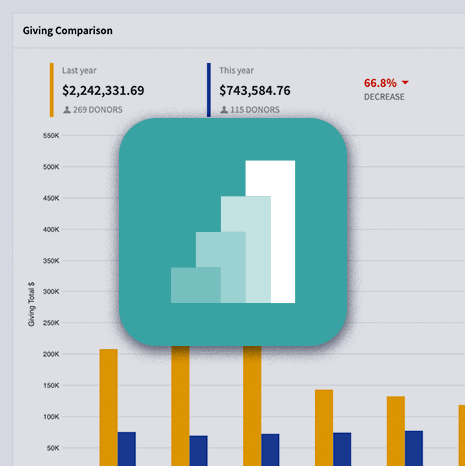
How Resonate Church Innovated to Reach College Students
Few segments of society have been harder for churches to reach over the last few decades than college students. As students leave the safety and security of home, many choose to back away from the spiritual training of their childhood.
That’s what makes the story of Resonate Church in Pullman, WA, so critical for other leaders to learn about.
When Keith Wieser arrived in Pullman, WA, in 2006 with an assignment to reach college students with the gospel, he planned a traditional route for Southern Baptists. As the incoming director of Baptist Student Ministries at Washington State University, Keith figured he’d continue to develop the campus’s Baptist Student Ministry as a vehicle to reach and disciple college students. Keith didn’t just want a place for Baptist students to grow on campus. He wanted to saturate the campus with the gospel. He wanted to reach the large percentage of Washington State students that had little to no church background.
That’s when Keith made the first of many innovations in his collegiate ministry. He turned it into a church.
The story of Resonate is all about innovation. Though many of the innovations weren’t completely originally, they were all new to Keith and the Resonate team.
These innovations have played a critical role in the church’s growth. Within a decade, they have expanded from a handful of students to more than 1,000 students meeting on six college campuses throughout the Northwest. Nearly 4,000 students participate in Resonate-sponsored small groups during a typical year. The church has also used its growing influence to impact collegiate church planting efforts throughout the United States.
Church Tech Check
This proprietary online assessment helps churches understand how they rank in regards to what tech they use and how they use it.

Recently, Tobin Perry of pushpay.com talked with Keith about Resonate’s journey.
Transitioning from a Collegiate Ministry to a Church
Tobin: Originally, you came to Pullman to be a Baptist Student Ministries director. Why did you transition the ministry to become a collegiate church plant?
Keith: We wanted to saturate the gospel throughout the university, and we needed a model that would allow us to multiply and to engage students through our ministry. We didn’t want to become just one of a buffet of things students could choose from. We wanted to engage students, but we also wanted them to be able to replicate their experience with us post-college. You can’t replicate a campus ministry after college. But obviously you can replicate a church experience.
We were also reaching those who were furthest from Christ. Their understanding of spirituality had the language of church in it, but campus ministry was a foreign concept. Even if they hated church, at least they knew what it was, and we could begin with a similar language. I’m talking about not having to explain our organization, but to explain our mission instead.
We basically got started by asking what would it look like if this ministry was a church. It was so slow in the beginning because we effectively had to make up everything on our own. We’re passionate about telling people what we’ve learned so they don’t have to come up with it on their own. But when we were doing this, there were no models that we knew of. We went about two years before we began to realize there were other people who had done similar things.
Engaging Students in a Lifetime of Church Planting
Tobin: Tell us about the concept of “scriptwriting,” and how you use that to prepare students for future roles in church planting.
Keith: In our context, we have students for a defined amount of time, about four years. And in that time, there are already so many things happening as they begin to make choices and set trajectories for their lives. We wanted to cast a vision for a better trajectory. The most effective way to do this is to show them how these decisions will play out later in life. We try to figure out how to give them a script for this. That script basically combines answering the why and showing them a model.
We help them to understand, “Why would you want to be a part of church planting throughout your life?” And then we give them a model for how it’s done. This way, they’re not just hearing it, but they can look to an actual life and say, “I could do that.” It may seem impossible when you hear it, but it becomes much more doable when you can see it.
Discipling Students over the Summer
Tobin: Your church’s Elevate program has a great track record for helping students grow over the summer. How did you develop it?
Keith: Again, we were trying to figure out how to accelerate the growth of a student who doesn’t know Christ to a student who leaves our ministry as a marketplace missionary. We began to recognize that typically we have nine months with them, and then there would be a gap over the summer. Usually, a student’s growth didn’t accelerate over the summer. In fact, usually they would fall back into habits, into sin, into places where their maturity would be stunted in Christ. So we asked ourselves, “Is there a way to be able to take something that’s a loss and turn it into an accelerant?”
That’s why we created Elevate, which formed a 10-week experience that would be the equivalent to a month if you were to progress in maturity naturally.
We put ten students in the tight confines of a large hotel room. Or we rent an apartment complex. But they live in community. They get jobs so they can live missionally. Then, concurrently, we give them teaching and training on how to operate as missionaries and as leaders in the world around them.
Students raise about $3,500 in order to participate in this. We went from having one trip a couple of years ago to having six different trips this year. We basically wanted to figure out how to turn a loss of spiritual momentum into a time of growth.
How Resonate Funds Its Staff
Tobin: All of your staff members raise their own support rather than receiving a salary from the church. How did that develop?
Keith: We asked the question, “What will keep us from saturating our campus with the gospel?” Part of it was that college students don’t have any money. So we asked ourselves, “Okay, if college students don’t have any money, but they’re one of the most strategic groups in the world to reach, what do we do?”
In campus ministries like CRU and others, the staff raises support. They ask people to invest in their ministries, to invest in the future of the church, and to invest in the future of the collegiate leaders they’re reaching. We’ve had a lot of people that will say, “Oh my goodness. That was such a formative time for me. If I could give resources so people like myself could be transformed by the gospel…” then we begin to see people support our staff.
Now we have 54 staff members who are fully supported that way. That’s far more than most churches of our size would have on staff.
We get support from alumni, parents, friends, and organizations. It’s a broad coalition of people who allow our church to thrive by supporting our staff.
Sending out 25-Year-Old Church Planters
Tobin: Resonate starts many of its churches with relatively young church planters. How do you do that successfully?
Keith: The average age for church planters, in Southern Baptist life at least, is 34. To be able to shorten that by nine years allows us to engage more people in the mission.
To do that, we try to surround our planters with a support system. Many people believe sending out a 25-year-old church planter is outrageous and unwise. So the innovation here was to give them a longer on-ramp to preaching by using video-venue preaching so they can accrue the wisdom and knowledge biblically before they’re required to stand on their own two feet, so to speak. That allows them to operate more as a missionary than as a preacher.
Then we put a support system and network around them. We centralize many of the services, like finance, HR, and equipment. They don’t have to make a lot of the decisions that just require much more industry knowledge. Instead, they have to be the chief missiologist for that campus and that city.
Dealing with Criticism
Tobin: Often when a church does things in a more innovative manner, they find themselves the subject of more criticism. How do you deal with that?
Keith: If you’re not arrogant about it, any criticism will make you reconsider what you’re doing and ensure that what you’re doing is actually the right thing. Listening to criticism has allowed us to understand where we stand, why we’re doing what we’re doing, and to be able to more clearly articulate it to others. It has been really helpful for us.
We try not to create either/ors, but instead to create both/ands. There’s just enough lostness that I feel like we need to say, “Everything that’s actually creating disciples should be celebrated.”
I’ve also tried to develop a network around me that helps me not to get discouraged, but also to not be blinded. I think that’s the key when you’re innovating. You don’t want to be blinded. Sometimes during the process of innovation, you put yourself in a hole. You don’t want to talk to anyone. You know everyone’s a critic. That’s not helpful. But it’s also not helpful when you begin to question your dreams, question your calling, because of other people.
Learning from Failure
Tobin: When your church is involved in innovating heavily, failure is often a part of the equation. Does Resonate have examples of things you’ve tried and failed?
Keith: Absolutely. We’ve failed so much. Of course, you try to figure out how to fail and learn. And so one of the things that we do really hardcore is evaluations. We evaluate like crazy. And we do it twice a year. We typically take at least four days with our entire staff. We run everything we can through the ringer and try to figure out if something is succeeding or failing. That’s really, really important to us. Every time we do this process, we find things that are failing.
One of the things we did for years is we would try to change our entire culture all at once. We’d have an idea and say, “Hey, we’re going to change this.” But we really didn’t understand anything about the diffusion of innovation, in terms of being able to say we had early adopters, late adopters, laggards, and such.
We’ve learned that we have to first innovate with a few people, then let it spread to the entire organization.
Another example is something we did with our small groups. They had been highly programmed and controlled, which created a lot of excellence, but it really didn’t teach people how to be missionaries.
Instead, they were just doing a program. So we removed all of the control and released them. But we didn’t teach them what to do. And so we had chaos. We had students calling things small groups that simply weren’t. They would go play racquetball and call it a Bible study. And we’re like, “No, it’s not. It’s literally not what you’re doing.” We thought we were releasing people, and really we were just confusing people.
The Significance of Innovation When Reaching College Students
Tobin: Do you find that innovation is more important when you’re trying to reach students with the gospel?
Keith: Innovating with college students is just infinitely easier in my mind. There’s just very little history to whatever they believe. You can change their expectations pretty quickly. But I do think, in the Millennial generation, everything moves so quickly in terms of the pace of change. Just look at how quickly what’s popular changes among Millennials.
You really have to understand what’s going on and what’s current. Understanding the current dynamics impacting students helps you know the questions the gospel must answer. If you start answering irrelevant questions, then you’re going to provoke apathy in the people around you. That’s been a big part of innovation for us. We’re always asking ourselves, “Are we answering the right questions? Are we answering the questions that are being asked?” And that’s where the pace of change really keeps you on your toes.
Making Innovation a Value in the Church
Tobin: What do you do to make sure your church keeps innovating on a regular basis?
Keith: First, we use a phrase, “A bias to yes.” We try to figure out how to say yes to people when someone wants to try something. When you say yes to things, people continue to try stuff. And you might find something that was really, really bad. But in the midst of that, you find something that’s brilliant.
Second, we gather together monthly to leverage our time as a whole network together for collaborations. In the book The Starfish and Spider, the authors write about how innovation happens on the edges and not at the center of an organization. So we try to let the edges of our organization speak back to the center. So, as a lead pastor, I have to be in the mode of listening, not telling. That listening posture is really what spurs on innovation.
State of
Church Tech
Discover what church leaders like you are saying about their priorities, concerns, and expectations with church technology, today and for the future.

We’ll also do war games where we set up absurd scenarios, just to try to figure out, “What would we do?” Like, we’ve addressed stuff on campus, and we’ve made Christianity illegal. Or we’ve said, “Okay, you lose 50 percent of your team.” So those kinds of things really help us to innovate.
Another thing we learned from Craig Groeschel’s podcast is whatever metrics you’re shooting at, add a zero to that. This really allows you to break into innovative thinking. So if you’ll just add a zero, then you’ll begin to arrive at conclusions that you never would have had if you just took your original metric that you were shooting for.
Why Resonate Invests in Technology
Tobin: I know Resonate is a Pushpay customer. Why is embracing technological innovation so important to your church’s ministry?
Keith: I think it first started with our realization that many of our students had never written a check. Even fewer carry cash on them. You’ve got to realize that if they’re going to give, it’ll have to be in the right mode. Figuring out that mode is key.
Giving on site and checking emails just doesn’t happen much with our students. Students regularly do not check their emails. Push notifications, texts, and social media are really the best ways to get information in front of our students.
We’ve had to grow with that and learn how our students interact and communicate. For us, it really begins with letting the people whom we’re trying to reach drive the kind of technology we use, instead of asking them to fit their world into the preferred technology that we would have. That’s important, particularly if you’re reaching non-believers.
This interview has been edited for grammar and content.
Tour our
Giving Product
A comprehensive solution for secure, cheerful giving & donor development.


Community Size
Key Tools
- Digital Giving
- Church App
Results
“We’re always asking ourselves, ‘Are we answering the right questions? Are we answering the questions that are being asked?’ And that’s where the pace of change really keeps you on your toes.”

